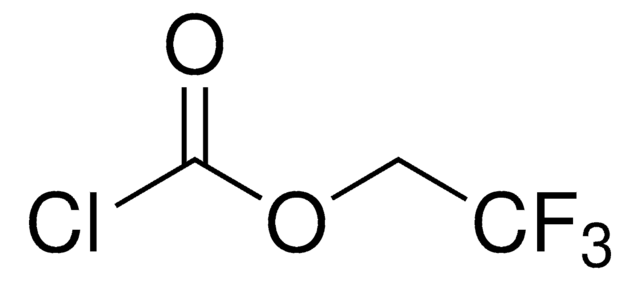Dry sieve residue 63 μm is between 10 - 22 % for this product. Usage of this item is predominantly reported for organic synthesis as a solid lewis acid catalyst or nanofiller. Consult specific research to determine if the material has been used for a similar application. A couple of articles that may be of potential interest to you are defined below.
69866
Montmorillonite
K 10, powder
Sinonimo/i:
K-Catalyst
Scegli un formato
Scegli un formato
About This Item
Prodotti consigliati
Livello qualitativo
Stato
powder
pH
3-4
Stringa SMILE
[Si](=O)=O.[Si](=O)=O.[Si](=O)=O.[Si](=O)=O.[Al+3].[Al+3].[O-2].[O-2].[O-2].O
InChI
1S/2Al.4O2Si.H2O.3O/c;;4*1-3-2;;;;/h;;;;;;1H2;;;/q2*+3;;;;;;3*-2
GUJOJGAPFQRJSV-UHFFFAOYSA-N
Cerchi prodotti simili? Visita Guida al confronto tra prodotti
Categorie correlate
Descrizione generale
Applicazioni
- A nanofiller to improve the mechanical properties of poly(vinyl alcohol) (PVA) film for potential usage in packaging applications.[2]
- A catalyst in the conversion of polar and non-polar algae oil lipids to biodiesel.[3]
It can also be used:
- As a nanofiller in the preparation of biopolymer based nanocomposites.[4]
- In the preparation of Fe3+-montmorillonite, a solid acid catalyst for the synthesis of xanthenedione derivatives.[5]
Codice della classe di stoccaggio
11 - Combustible Solids
Classe di pericolosità dell'acqua (WGK)
WGK 3
Punto d’infiammabilità (°F)
Not applicable
Punto d’infiammabilità (°C)
Not applicable
Dispositivi di protezione individuale
Eyeshields, Gloves, type N95 (US)
Scegli una delle versioni più recenti:
Possiedi già questo prodotto?
I documenti relativi ai prodotti acquistati recentemente sono disponibili nell’Archivio dei documenti.
I clienti hanno visto anche
-
Can this be used as a nucleating agent? If yes, is there a size associated with the particles?
1 risposta-
Utile?
-
-
How can I determine the shelf life / expiration / retest date of this product?
1 risposta-
If this product has an expiration or retest date, it will be shown on the Certificate of Analysis (COA, CofA). If there is no retest or expiration date listed on the product's COA, we do not have suitable stability data to determine a shelf life. For these products, the only date on the COA will be the release date; a retest, expiration, or use-by-date will not be displayed.
For all products, we recommend handling per defined conditions as printed in our product literature and website product descriptions. We recommend that products should be routinely inspected by customers to ensure they perform as expected.
For products without retest or expiration dates, our standard warranty of 1 year from the date of shipment is applicable.
For more information, please refer to the Product Dating Information document: https://www.sigmaaldrich.com/deepweb/assets/sigmaaldrich/marketing/global/documents/449/386/product-dating-information-mk.pdfUtile?
-
-
How is shipping temperature determined? And how is it related to the product storage temperature?
1 risposta-
Products may be shipped at a different temperature than the recommended long-term storage temperature. If the product quality is sensitive to short-term exposure to conditions other than the recommended long-term storage, it will be shipped on wet or dry-ice. If the product quality is NOT affected by short-term exposure to conditions other than the recommended long-term storage, it will be shipped at ambient temperature. As shipping routes are configured for minimum transit times, shipping at ambient temperature helps control shipping costs for our customers. For more information, please refer to the Storage and Transport Conditions document: https://www.sigmaaldrich.com/deepweb/assets/sigmaaldrich/marketing/global/documents/316/622/storage-transport-conditions-mk.pdf
Utile?
-
-
Could you please provide me with the CEC of your montmorillonite nanoclays?
1 risposta-
Among the Montmorillonite products listed, there is essentially no distinction in terms of Cation Exchange Capacity (CEC, reported in terms of milliequivalents per 100 grams of material). For Montmorillonite K10 (Products 69866 and 281522), the CEC has been variously reported as either 30-40 meq/100g or just 30 meq/100g. And for Montmorillonite K30 (Prodct 69904), the CEC has been reported as 30 meq/100g.
Utile?
-
Filtri attivi
Il team dei nostri ricercatori vanta grande esperienza in tutte le aree della ricerca quali Life Science, scienza dei materiali, sintesi chimica, cromatografia, discipline analitiche, ecc..
Contatta l'Assistenza Tecnica.








